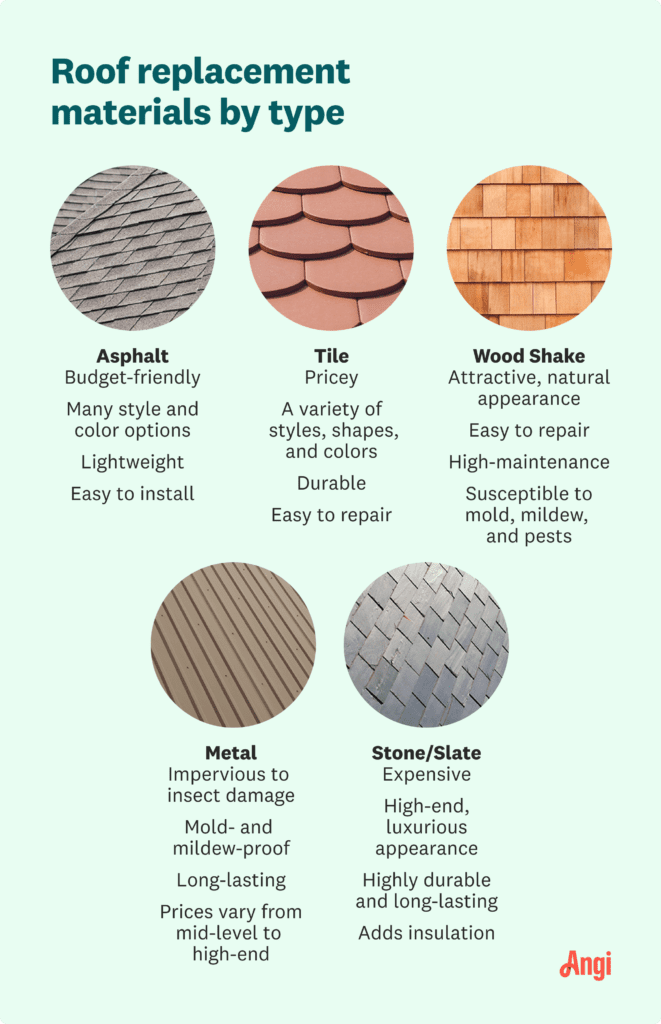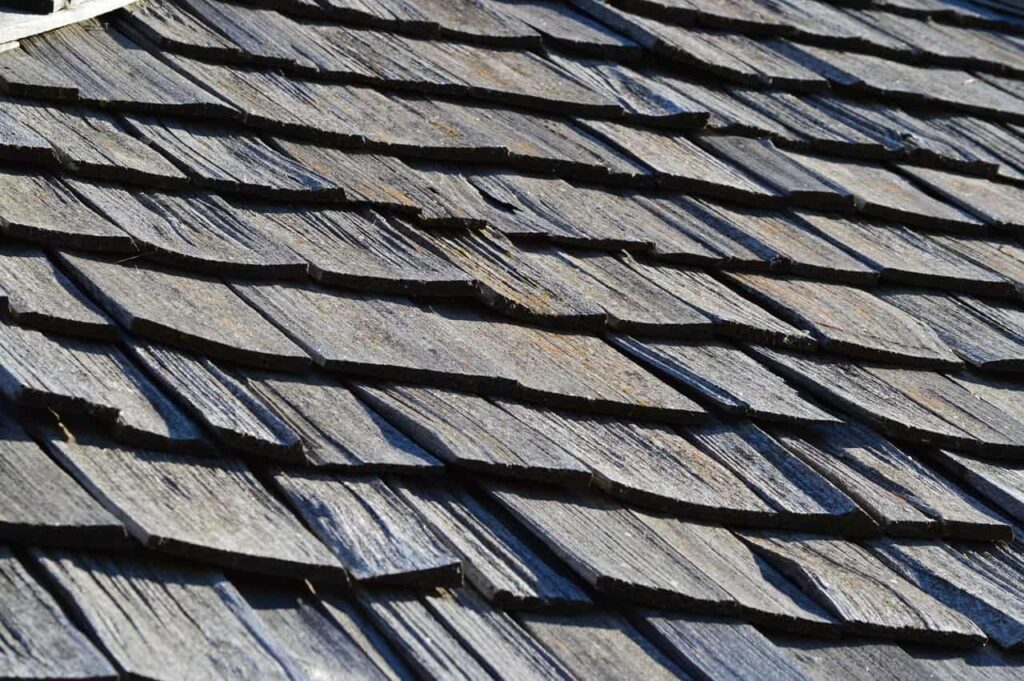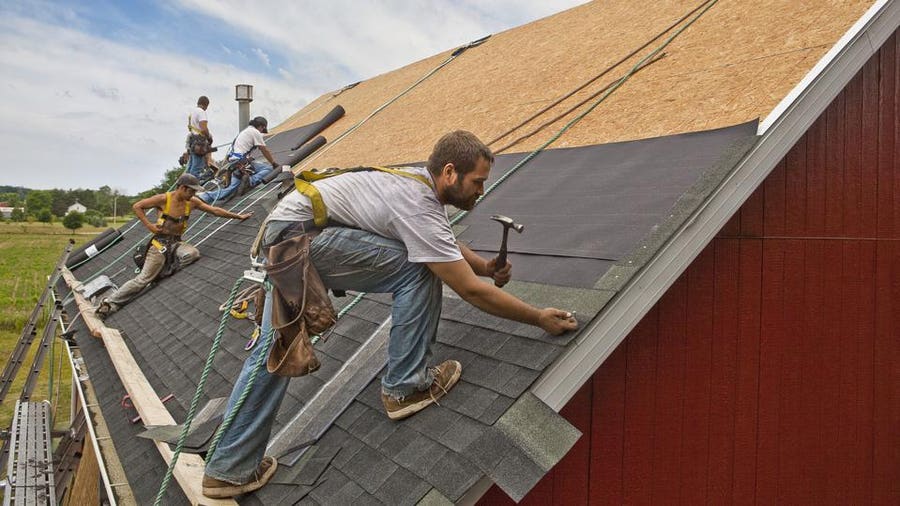Thinking about doing your own roof? Wondering if it’s worth the effort and if you’ll actually save money in the long run? Well, in this article, we will explore the potential savings of tackling a roof replacement or repair project on your own. By examining the costs involved, the time commitment required, and the risks associated with DIY roofing, we hope to provide you with the information you need to make an informed decision and determine just how much you can save if you decide to go the DIY route.

Factors to Consider
Roof Complexity
One of the first factors to consider when deciding whether to tackle your own roofing project is the complexity of your roof. If you have a simple, straightforward roof with few angles or features, it may be more manageable for a DIY project. However, if your roof has multiple levels, dormers, or other intricate features, it may be more challenging to navigate and require more extensive knowledge and experience.
Time and Effort
Roofing is not a quick or easy task, even for professionals. It requires a significant amount of time and effort to properly complete a roofing project. Before deciding to do your own roof, you must consider if you have the time and dedication to commit to the project. Depending on the size of your roof, it could take several weekends or even longer to complete.
Skills and Experience
Another crucial factor to consider is your level of roofing skills and experience. If you have never worked on a roof before, it may not be the best idea to jump into a DIY roofing project. Roofing requires specific techniques, knowledge of materials, and the ability to work safely at heights. If you have some experience or are willing to invest time in learning, it may be more feasible to take on the project yourself.
Safety Precautions
Roofing can be a hazardous activity, and proper safety precautions are essential. Before undertaking a DIY roofing project, you must ensure you have the necessary safety equipment, such as harnesses, helmets, and non-slip footwear. Additionally, you should consider if you are comfortable working at heights and if you have the confidence to navigate a roof safely.
Tools and Equipment
To successfully complete a roofing project, you will need a range of tools and equipment. These can include items such as hammers, roofing nail guns, roofing knives, and ladders. Before starting your DIY project, make sure you have access to all the necessary tools and equipment. Keep in mind that some specialized equipment may need to be rented or purchased, adding to the overall cost of the project.
Labor Costs
Hiring Professional Roofers
If you decide not to tackle the roofing project yourself, you will need to hire professional roofers. Hiring professionals can save you time, effort, and ensure a high-quality result. However, it is important to consider the cost implications. Professional roofers typically charge labor costs based on the size and complexity of the project, as well as the region in which you live.
Average Roofing Labor Costs
The average roofing labor costs range from $50 to $150 per hour, depending on various factors. A simple roof with a straightforward installation process will generally have lower labor costs, while a complex roof with multiple levels and features can significantly increase labor costs. It’s important to request multiple quotes from different roofing contractors to compare prices and choose a service that fits your budget.
Cost Breakdown
The cost breakdown for professional roofing labor typically includes factors such as the size of the roof, the complexity of the project, and the cost of materials. Labor costs are usually estimated based on the number of hours required to complete the project. It’s important to discuss the cost breakdown with the roofing contractor before making a decision.
Material Costs
Types of Roofing Materials
There are various types of roofing materials available, each with its own pros and cons. Common roofing materials include asphalt shingles, metal, clay or concrete tiles, and slate. The cost of materials will vary depending on the type of roof covering you choose. Asphalt shingles, for example, are generally more affordable than metal or slate.
Material Costs Breakdown
The material costs for your roofing project will depend on the size of your roof, the type of materials chosen, and any additional features or accessories required. It’s important to carefully calculate the required amount of materials to avoid overbuying and wasting money. You can consult with a roofing supply store or talk to a professional roofer for guidance on estimating material costs.
Additional Expenses
In addition to the roofing materials, there may be additional expenses to consider. These can include items such as underlayment, flashing, ventilation systems, and insulation. It’s important to factor in these additional expenses when calculating the overall cost of your DIY roofing project.
Permits and Inspections
Building Permits
Before starting any roofing project, it’s essential to check if you need a building permit. Building codes and regulations vary depending on your location, and failure to obtain the necessary permits can result in fines or legal complications. Contact your local building department to determine the requirements for obtaining a permit and ensure compliance with all regulations.
Inspections
In addition to obtaining a building permit, you may also need to schedule inspections throughout the roofing process. Inspections are typically required to ensure that the roof installation meets safety and quality standards. These inspections are usually carried out by local building inspectors or other authorized professionals. It’s crucial to schedule and pass these inspections to ensure the longevity and durability of your roof.

Avoiding Mistakes
Improper Installation
One of the most significant risks of a DIY roofing project is the potential for improper installation. Without proper training and experience, it’s easy to make critical mistakes that can lead to leaks, poor insulation, or even structural damage. Improper installation can also void warranties on roofing materials, leaving you responsible for any future repairs or replacements.
Voiding Warranties
Many roofing materials come with manufacturer warranties that provide protection against defects or premature damage. However, these warranties often stipulate that the materials must be installed by a qualified professional. If you choose to do the roofing yourself, you may unintentionally void these warranties, leaving you financially responsible for any future issues.
Reduced Property Value
While the idea of saving money may be tempting, it is important to consider the potential impact on your property value. A poorly installed or visibly DIY roof may detract from the overall aesthetics and quality of your home. This can negatively affect the resale value and appeal of your property. If you plan to sell your home in the future, a professionally installed roof can provide peace of mind to potential buyers.
Benefits of DIY Roofing
Cost Savings
One of the primary benefits of tackling a roofing project yourself is the potential cost savings. By eliminating labor costs, you can significantly reduce the overall expense of the project. However, it’s important to weigh these savings against the risks and challenges associated with DIY roofing.
Sense of Accomplishment
Completing a roofing project on your own can provide a great sense of accomplishment and pride. The satisfaction of successfully navigating a challenging task and seeing the finished result can be incredibly rewarding. If you enjoy taking on DIY projects and have a passion for learning new skills, roofing can be a fulfilling and satisfying experience.
Flexibility
When you choose to do your own roofing, you have the flexibility to work on your own timeline. You can choose when to start and finish the project, taking breaks or adjusting your schedule as needed. This flexibility allows you to work at your own pace and prioritize other commitments alongside your roofing project.
Learning Experience
Embarking on a DIY roofing project provides an excellent opportunity to learn new skills and expand your knowledge. You can gain valuable insights into the construction and maintenance of roofs, which may be useful in future endeavors. The learning experience can be both practical and educational, enhancing your confidence and abilities in home improvement projects.

Tools and Equipment
Essential Tools
To successfully complete a roofing project, you will need a range of essential tools. These can include items such as a hammer, utility knife, measuring tape, chalk line, and roofing nails. It’s crucial to gather all the necessary tools before starting your project to ensure a smooth workflow and avoid unnecessary delays.
Specialized Equipment
In addition to basic tools, some roofing projects may require specialized equipment. This can include items such as a roofing nail gun, a roofing tear-off shovel, or a roof jacks system. If you don’t already own these specialized tools, you may need to consider renting or purchasing them, which can add to the overall cost of your DIY roofing project.
Renting vs. Buying
When deciding whether to rent or buy specialized roofing equipment, it’s important to consider factors such as the frequency of use, the cost of rental, and the long-term value of the equipment. If you anticipate future roofing projects or other construction endeavors, it may be more cost-effective to invest in purchasing the equipment. However, if the equipment is rarely used or has limited utility, renting can be a more practical and economical option.
Safety Precautions
Working at Heights
Roofing involves working at heights, which presents inherent risks. It’s crucial to take all necessary precautions to ensure your safety and the safety of those around you. Follow proper ladder safety practices, such as placing it on stable ground, securing it, and maintaining three points of contact while climbing. Additionally, consider using scaffolding or roof jacks to provide a stable and secure working platform.
Protective Gear
When working on a roof, it’s essential to wear appropriate protective gear. This includes items such as a helmet, safety glasses, gloves, and non-slip footwear. Protective gear can help prevent injuries from falling debris, slips, and cuts. It’s important to invest in high-quality safety equipment to ensure adequate protection throughout the roofing process.
Using Ladders Safely
Ladder safety is paramount when working on a roof. Make sure your ladder is in good condition, with no missing rungs or defects. Set up the ladder at the correct angle and secure it to prevent any wobbling or movement. Always maintain three points of contact on the ladder and avoid overreaching. If possible, have someone assist you in holding the ladder steady while you climb.

Roofing Process
Assessing the Roof
Before starting any roofing project, it’s important to thoroughly assess the condition of your roof. Identify any areas of damage, leaks, or signs of deterioration. Take measurements and make note of any unique features or challenges that may affect the installation process. A thorough assessment will help you plan and prepare for the project more effectively.
Planning and Preparation
Proper planning and preparation are essential for a successful DIY roofing project. Evaluate the materials needed, create a detailed schedule, and ensure you have all the necessary tools and safety equipment. Prepare the work area by clearing debris and protecting surrounding structures or landscaping. Taking the time to plan and prepare will streamline the project and minimize potential issues.
Removing Old Roofing
Once you have planned and prepared, it’s time to remove the old roofing material. Start by stripping off any shingles, tiles, or metal panels, being careful not to damage the underlying structure. Dispose of the old material responsibly, following local regulations and guidelines. Removing the old roofing is a crucial step to ensure a clean and stable foundation for the new roof.
Repairing or Replacing Sheathing
After removing the old roofing material, inspect the sheathing for any damage or deterioration. Repair or replace any damaged sections to ensure a solid and stable base for the new roof. Properly addressing sheathing issues will prevent future problems and prolong the lifespan of your roof.
Installing Underlayment
The underlayment is a crucial layer that provides an additional barrier against moisture and helps to insulate the roof. Follow manufacturer guidelines and local building codes when installing the underlayment. Take care to properly overlap and secure the underlayment to ensure a watertight seal and optimal protection.
Applying Roofing Materials
With the underlayment in place, it’s time to install the roofing materials. Whether you choose asphalt shingles, metal panels, or another type of roofing material, follow the manufacturer’s instructions for proper installation. Pay attention to correct fastening techniques, alignment, and overall appearance to ensure a professional finish.
Flashing and Ventilation
Flashing is used to seal joints and transitions between roofing components, such as around chimneys or vents. Proper installation of flashing is crucial to prevent leaks and water damage. Additionally, ventilation is essential for allowing air circulation and preventing moisture buildup in the attic or roof space. Ensure proper flashing installation and adequate ventilation to maintain the longevity and performance of your roof.
Cleanup
Once the roofing materials are installed, take the time to clean up any debris or leftover materials. Dispose of waste responsibly and leave the work area in a clean and tidy condition. Proper cleanup will not only provide a visually appealing finish but also ensure the safety of your property and prevent potential hazards.
When to Hire Professionals
Complex Roofing Systems
If your roof has complex features, multiple levels, or requires specialized knowledge, it may be best to hire professional roofers. Complex roofing systems can be challenging to navigate and install correctly, increasing the risk of errors or damage.
Limited Time or Physical Ability
Roofing projects can be time-consuming and physically demanding. If you have limited time availability or physical ability, it may be more practical to hire professionals who can efficiently complete the project within a shorter timeframe.
Structural Issues
If your roof has underlying structural issues, such as sagging or rotting beams, it is crucial to address these problems before installing a new roof. Professional roofers are experienced in identifying and rectifying structural issues, ensuring the long-term stability and safety of your roof.
Warranty and Professional Installation
Many roofing material manufacturers offer warranties that require professional installation. If you want to take advantage of these warranties and have peace of mind knowing that your roof is professionally installed, hiring experts is advisable.
In conclusion, undertaking a DIY roofing project can be a cost-effective and rewarding endeavor. However, it is essential to carefully evaluate the complexity of your roof, your skills and experience, and the necessary safety precautions. Consider the potential savings, sense of accomplishment, and learning experience associated with DIY roofing, balanced against the challenges, risks, and potential impact on property value. If in doubt, consult with professional roofers to determine the best course of action for your specific circumstances.
